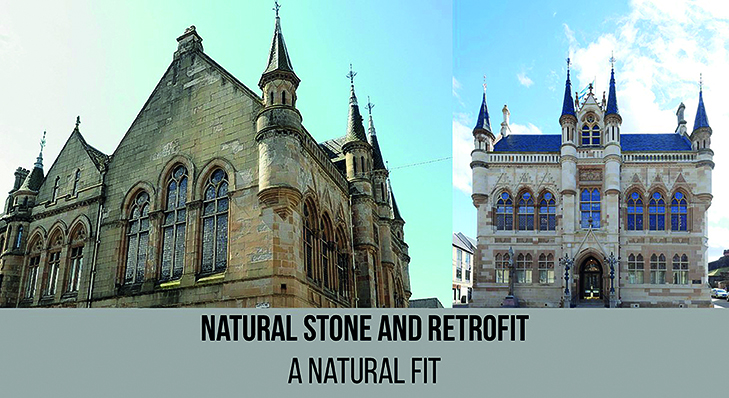As specifiers become increasingly aware that a ‘business as usual’ approach to the carbon impacts of architecture and construction is no longer an option, there is a fresh drive to consider the alternatives.
In September last year Architects’ Journal launched its RetroFirst campaign, aimed at prioritising retrofitting existing buildings rather than demolition and rebuild.
The campaign sits alongside several other initiatives seeking to encourage architects to try to work with the existing structure as a more sustainable approach to construction.
Retrofitting – adding something new to something existing – is not a new approach. Through good maintenance and conservation schemes hundreds, if not thousands of natural stone structures have stood for centuries. Many of Great Britain’s major cities have been architecturally defined by their stone buildings, while buildings made from other materials have sometimes aged poorly.
Natural stone is one of the most durable of all construction materials, giving maintenance teams the option to redress, clean and replace any damage without having to flatten the building and start again.
The Repair & Restoration category of the Natural Stone Awards is full of inspiring examples of buildings that have been retrofitted. Had they been constructed in concrete, or other less durable materials, they would have been demolished.
Unfortunately, the construction sector steers further and further away from durable building and errs more on the side of quick, cheap short lifespan material choices.
It is encouraging to see a shift away from this specification model as architects challenge themselves to change their habits to deliver a more sustainable approach to the built environment.
The Architects’ Journal campaign references a study by the Department for the Environment, Food & Rural Affairs (DEFRA), which found that of the 200million tonnes of waste generated in Britain annually, 63% is construction debris.
It is for this reason, among others, that proper maintenance is essential. If properties are maintained properly, with suitable skill and understanding, the greater will be the environmental and practical advantages to the preservation of the structure.
It is, though, essential that such maintenance and cleaning should be carried out by fully trained operatives in order to avoid any damage being caused by an inappropriate method being used or an incompetent operative.
It should be remembered that decay can often take place around an open joint or cracked masonry, and that those problems might not be apparent if they are obscured by organic growth or heavy soiling.
To start your search for a natural stone conservation or restoration expert, visit The Stone Heritage Register at bit.ly/2GluMyM.

